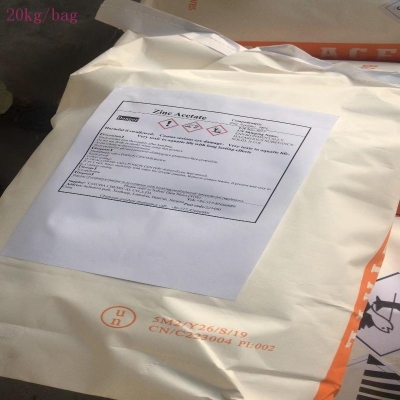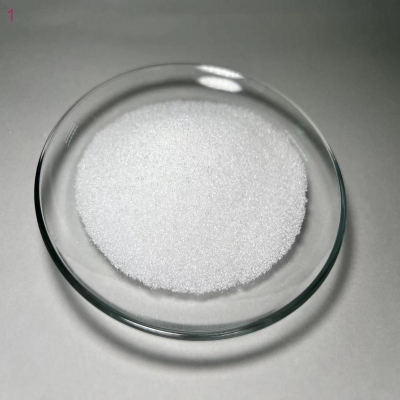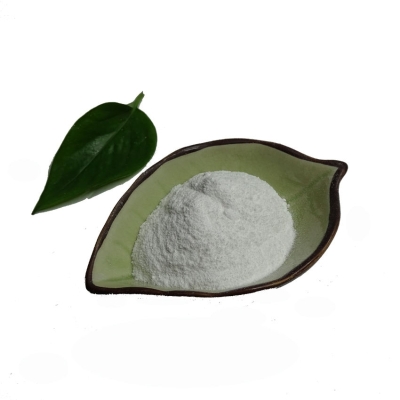-
Categories
-
Pharmaceutical Intermediates
-
Active Pharmaceutical Ingredients
-
Food Additives
- Industrial Coatings
- Agrochemicals
- Dyes and Pigments
- Surfactant
- Flavors and Fragrances
- Chemical Reagents
- Catalyst and Auxiliary
- Natural Products
- Inorganic Chemistry
-
Organic Chemistry
-
Biochemical Engineering
- Analytical Chemistry
-
Cosmetic Ingredient
- Water Treatment Chemical
-
Pharmaceutical Intermediates
Promotion
ECHEMI Mall
Wholesale
Weekly Price
Exhibition
News
-
Trade Service
Although combined with the analysis of the macroeconomic situation, the overall pessimistic conclusion of the fertilizer market has been drawn, but there is no lack of hope in the despair.
At least the following three aspects of the fertilizer market in 2016 are worth looking forward to: First, the fertilizer export policy may be adjusted.
In recent years, the country has cancelled the preferential railway tariffs for chemical fertilizers.
Value-added tax was officially resumed in September 2015.
Electricity price preferences will be cancelled in April 2016.
Natural gas prices will also be integrated.
The complete marketization of chemical fertilizers is only short of time.
The abolition of export tariffs is "on the spot.
" ? The domestic production capacity of nitrogenous fertilizers and phosphate fertilizers is severely surplus.
In order to ensure domestic agricultural production, the fear of restricting the export of chemical fertilizers no longer exists.
The current fertilizer prices have caused most fertilizer companies to fall into a serious loss situation.
Domestic demand is difficult to increase.
The only hope for solving the overcapacity of fertilizers is export.
In 2015, the domestic import and export trade volume both dropped, and liberalizing restrictions and encouraging exports is the general trend of the country's foreign trade policy.
Therefore, the author believes that the zero-tariff policy for fertilizer exports in 2016 is worth looking forward to.
If the fertilizer export tariff is reduced to zero, compared with 2015, the export price of urea will be reduced by 80 yuan/ton and the phosphate fertilizer will be reduced by 100 yuan/ton.
This will greatly improve the competitiveness of China's fertilizer in the international market.
.
? Second, the RMB may depreciate.
With the exception of the United States, the global economic recovery is weak, the Eurozone and Japan are still implementing quantitative easing policies, and the U.
S.
dollar is the first to enter the interest rate hike cycle, which means that the U.
S.
dollar will strengthen while other currencies will still be in a depreciation channel.
If the renminbi does not depreciate, it will cause the transfer of industries, China’s trade situation and the deterioration of the international trade balance, and make China more pressure to maintain growth.
Therefore, the author judges the possibility of renminbi devaluation is high.
According to analysts at Bank of America Merrill Lynch, the devaluation of the renminbi may reach 10% in 2016.
If the expectations come true, this will greatly enhance the competitiveness of China's fertilizer exports.
? Third, supply-side reform or acceleration.
Recently, the government has frequently mentioned supply-side reforms.
This is a new view that is completely different from traditional consumption, exports, and investment to stimulate the economy.
The rural reforms in Xiaogang Village, the bankruptcy of state-owned enterprises, and the reform of real estate were all reforms initiated from the supply side, and they also provided a strong and continuous impetus to China's economic growth.
In 2015, the government again provided supply-side reforms.
On the one hand, it is a new measure to resolve overcapacity, and on the other hand, it is a new driving force for economic growth.
It is believed that the supply-side reform in 2016 will definitely work hard to bring new opportunities to the fertilizer industry.
? The adjustment of tariffs and the devaluation of the renminbi will greatly enhance the competitiveness of China’s fertilizer exports, while supply-side reforms will reduce supply.
At least the following three aspects of the fertilizer market in 2016 are worth looking forward to: First, the fertilizer export policy may be adjusted.
In recent years, the country has cancelled the preferential railway tariffs for chemical fertilizers.
Value-added tax was officially resumed in September 2015.
Electricity price preferences will be cancelled in April 2016.
Natural gas prices will also be integrated.
The complete marketization of chemical fertilizers is only short of time.
The abolition of export tariffs is "on the spot.
" ? The domestic production capacity of nitrogenous fertilizers and phosphate fertilizers is severely surplus.
In order to ensure domestic agricultural production, the fear of restricting the export of chemical fertilizers no longer exists.
The current fertilizer prices have caused most fertilizer companies to fall into a serious loss situation.
Domestic demand is difficult to increase.
The only hope for solving the overcapacity of fertilizers is export.
In 2015, the domestic import and export trade volume both dropped, and liberalizing restrictions and encouraging exports is the general trend of the country's foreign trade policy.
Therefore, the author believes that the zero-tariff policy for fertilizer exports in 2016 is worth looking forward to.
If the fertilizer export tariff is reduced to zero, compared with 2015, the export price of urea will be reduced by 80 yuan/ton and the phosphate fertilizer will be reduced by 100 yuan/ton.
This will greatly improve the competitiveness of China's fertilizer in the international market.
.
? Second, the RMB may depreciate.
With the exception of the United States, the global economic recovery is weak, the Eurozone and Japan are still implementing quantitative easing policies, and the U.
S.
dollar is the first to enter the interest rate hike cycle, which means that the U.
S.
dollar will strengthen while other currencies will still be in a depreciation channel.
If the renminbi does not depreciate, it will cause the transfer of industries, China’s trade situation and the deterioration of the international trade balance, and make China more pressure to maintain growth.
Therefore, the author judges the possibility of renminbi devaluation is high.
According to analysts at Bank of America Merrill Lynch, the devaluation of the renminbi may reach 10% in 2016.
If the expectations come true, this will greatly enhance the competitiveness of China's fertilizer exports.
? Third, supply-side reform or acceleration.
Recently, the government has frequently mentioned supply-side reforms.
This is a new view that is completely different from traditional consumption, exports, and investment to stimulate the economy.
The rural reforms in Xiaogang Village, the bankruptcy of state-owned enterprises, and the reform of real estate were all reforms initiated from the supply side, and they also provided a strong and continuous impetus to China's economic growth.
In 2015, the government again provided supply-side reforms.
On the one hand, it is a new measure to resolve overcapacity, and on the other hand, it is a new driving force for economic growth.
It is believed that the supply-side reform in 2016 will definitely work hard to bring new opportunities to the fertilizer industry.
? The adjustment of tariffs and the devaluation of the renminbi will greatly enhance the competitiveness of China’s fertilizer exports, while supply-side reforms will reduce supply.







